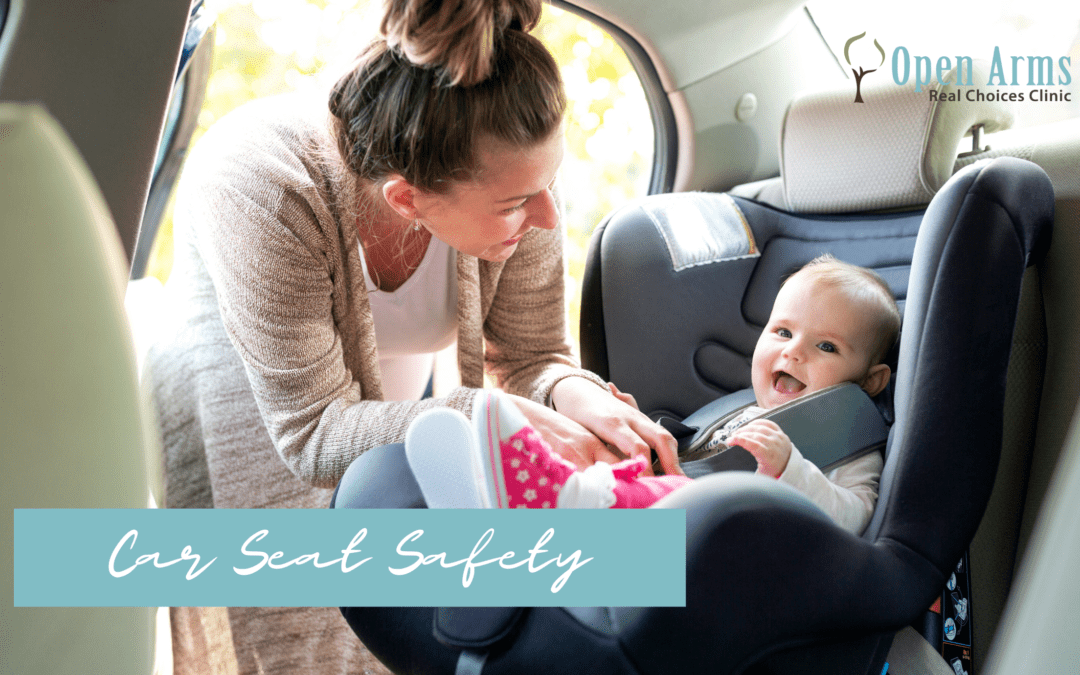Finding out you’re pregnant brings many new learning opportunities.. There’s so much to learn, and car seat safety is something new parents often overlook. However, taking your baby out on the town (and to those important doctor appointments) requires a safe and legal car seat system. Here are some helpful tips about car seat safety.
Car seat options can seem confusing to any new parent. We will discuss which type might be the best selection for your child.
Selection
The current recommendations for choosing a car seat should follow these guidelines.
- Children ride rear-facing for as long as possible until they exceed the maximum height or weight of their seat.
- Once a child exceeds the maximum height or weight of their rear-facing seat, they should ride forward-facing with a harness until they exceed the maximum height OR weight of their forward-facing harness seat.
- Once a child exceeds the maximum height or weight of their forward-facing harness seat, they ride in a belt position booster seat until they reach the maximum height OR weight of the booster seat. That is, if they can achieve proper seat belt fit without a booster, which is usually around 4’9”.
Infant Car Seat: These are rear-facing only seats and can be carried while the base remains in the car. The average acceptable weight is 5 pounds up to 30-35 pounds.
Convertible Car Seats: Both rear-facing and forward-facing and have two distinct belt paths, one for forward-facing and one for rear-facing. The average acceptable weight is as little as 5 pounds up to 65 pounds.
Combo Car Seats: These are harnessed boosters that start out as forward-facing and then become a booster seat as the child grows. The average acceptable weight is up to 50-65 pounds and up to 110 in booster mode.
All-In-One Car Seats: Though these do cost more up front, these seats have rear-facing, forward-facing and booster seat features.
Booster Seats: The seat is used to position your child properly so the seat belt system in your car can function effectively. This seat is used until the child outgrows the required maximum weight for car seats.
Location
The car seat should be positioned in the back seat at all times. Never place a rear-facing car seat in front of an active air bag. Though it is statistically safer to position your car seat in the rear center seat, placing it behind the driver’s seat or passenger’s seat is also perfectly okay.
Harnessing
Rear-Facing Car Seats: make sure the harness straps are positioned AT or BELOW the top of the child’s shoulders. Move up to the next harness strap height when your child’s shoulders are even with the next set of harness slots.
Forward-Facing Car Seats: make sure the harness straps are AT or ABOVE the child’s shoulders, never below.
Car seats will either have conventional harnessing systems or automatic harnessing systems. Whichever car seat you pick to fit your child’s needs, there will be installation help and instructions on how to adjust the harnesses for each type of car seat.
Final Thoughts
Though car seat safety might seem confusing and overwhelming with a brand new baby, there are multiple resources available to you to ensure safety for your child.
Check out our website https://openarms3.wpengine.com/ or call our office– Open Arms Real Choice Clinic at 2086675433 if you have any questions or would like more information. We are here to help. Make an appointment with us today!


